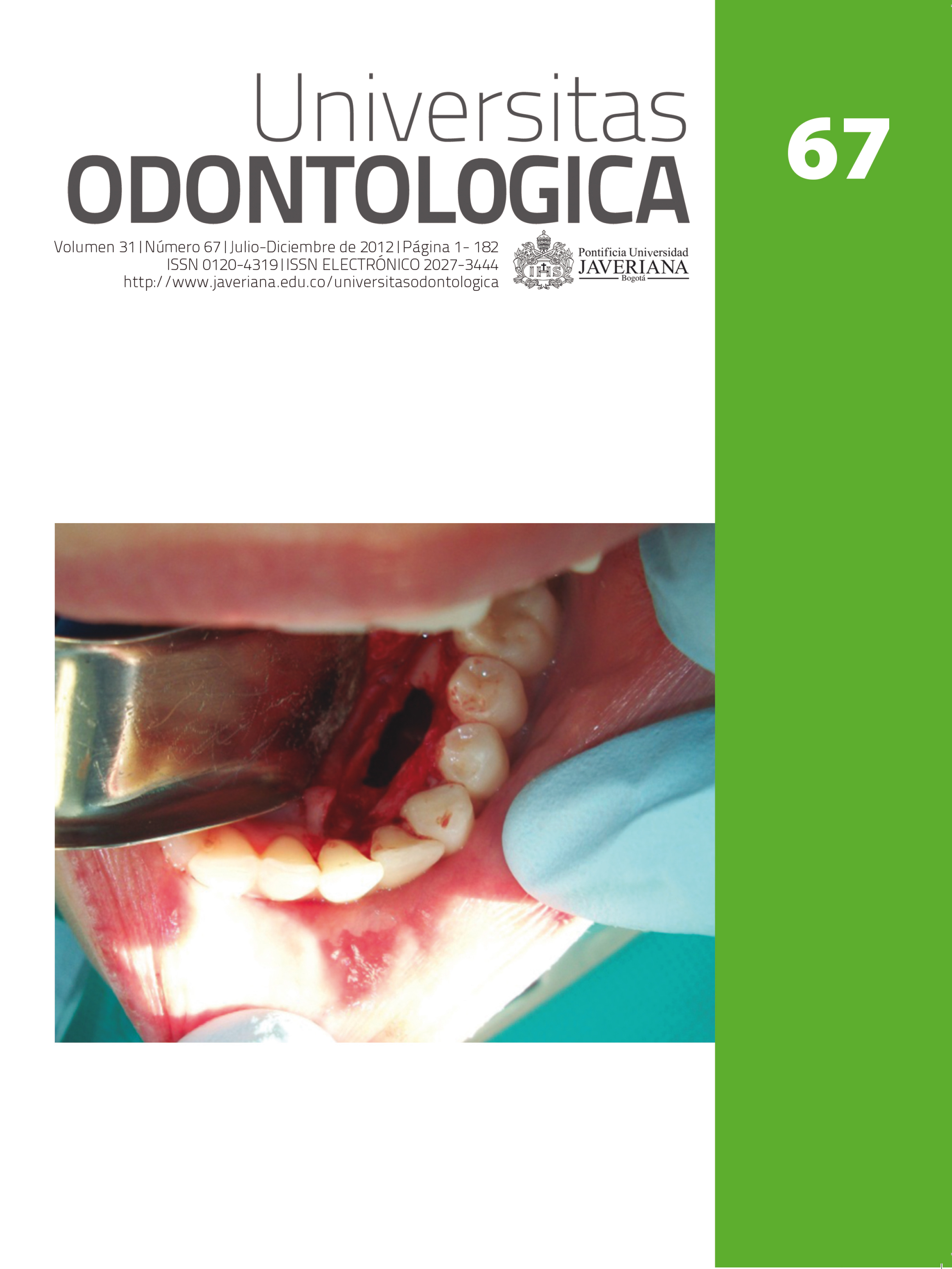Abstract
Background: Papillomavirus or papilovirus is considered the most prevalent group of virusesthat cause tumors of head and neck associated with infection with human papillomavirus (HPV). Purpose: Carry out a systematic review of literature on HPV as causal agentof upper aerodigestive tract neoplasm (UADTN), according to epidemiological and clinicaldata. Methods: Pertinent biomedical literature was searched in several databases such asMedline, Proquest, Science Direct, Ovid and Cochrane, as well as available information fromwebsites of national journals and organizations. Results: According to systematic reviewsthat did not show findings in Colombia, the prevalence of HPV in the process of malignantlesions of UADTN is 35.6 %, in the oropharynx, 23.5 %, in oral cavity, and 24 % in larynx.Worldwide, the prevalence of head and neck cancer produced by high-risk HPV, such as HPV16, is approximately 30.9 % in oropharynx, 16 % in oral cavity and 16.6 % in larynx. This reviewalso highlights that the genotypes of low-risk HPV are HPV 31, 45, 6 and 11. It emphasizesthe effectiveness of the PCR-RFLP method as the starting point to monitor the infection andprogression into cancer, to understand its virulence, and to contribute to reduce incidencerates because of the inaccuracies of clinical diagnosis by conventional methods that hinderthe early detection of UADTN.
Antecedentes: Los papilovirus o virus del papiloma son considerados el grupo más prevalentede virus que causa tumores de cabeza y cuello asociados a la infección con virusdel papiloma humano (VPH). Objetivo: Realizar una revisión sistemática de literatura acercadel VPH como agente causal del cáncer de vías aéreas y digestivas superiores (VADS),según información epidemiológica y clínica. Métodos: La búsqueda de literatura biomédicafue efectuada en varias bases de datos, como Medline, Proquest, Science Direct, Ovid yCochrane, así como información disponible en páginas en internet de revistas y organizacionesnacionales. Resultados: Según revisiones sistemáticas sin hallazgos en Colombia,la prevalencia de VPH en el proceso de malignización de lesiones de VADS es 35,6 % enorofaringe, 23,5 % en cavidad oral y 24 % en laringe. En el mundo, la prevalencia de cáncerde cabeza y cuello producido por VPH de alto riesgo, como el VPH 16, es aproximadamentedel 30,9 % en orofaringe, 16 % en cavidad oral y 16,6 % en laringe. Esta revisión destaca losgenotipos de VPH de bajo riesgo (VPH 31, 45, 6 y 11). Se muestra la efectividad del métodoPCR-RFLP como punto de partida para monitorear la infección y su progresión a cáncer,comprender su virulencia y contribuir a la disminución de las tasas de incidencia a causade las imprecisiones de diagnóstico clínico por metodologías convencionales que dificultanla detección precoz del CVADS.
This journal is registered under a Creative Commons Attribution 4.0 International Public License. Thus, this work may be reproduced, distributed, and publicly shared in digital format, as long as the names of the authors and Pontificia Universidad Javeriana are acknowledged. Others are allowed to quote, adapt, transform, auto-archive, republish, and create based on this material, for any purpose (even commercial ones), provided the authorship is duly acknowledged, a link to the original work is provided, and it is specified if changes have been made. Pontificia Universidad Javeriana does not hold the rights of published works and the authors are solely responsible for the contents of their works; they keep the moral, intellectual, privacy, and publicity rights.
Approving the intervention of the work (review, copy-editing, translation, layout) and the following outreach, are granted through an use license and not through an assignment of rights. This means the journal and Pontificia Universidad Javeriana cannot be held responsible for any ethical malpractice by the authors. As a consequence of the protection granted by the use license, the journal is not required to publish recantations or modify information already published, unless the errata stems from the editorial management process. Publishing contents in this journal does not generate royalties for contributors.


